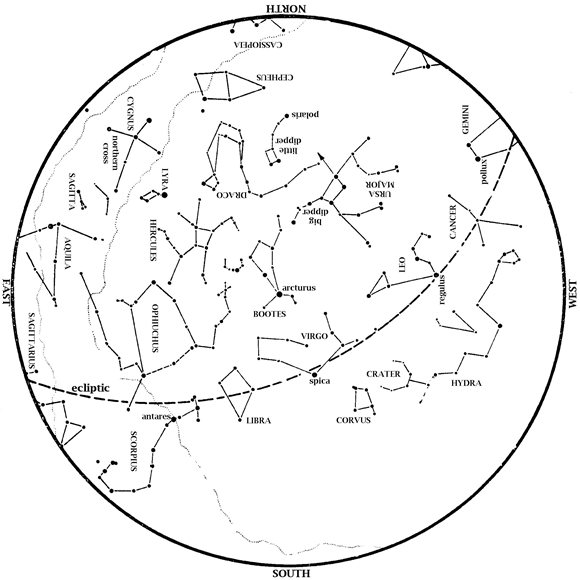There has been a lot of strange weather this spring. Temperatures in North Dakota reached -60°F — which is about the same temperature at the surface of Mars, and about 50°F colder than the North Pole on the same day.
Meanwhile, in Australia, temperatures reached over 120°F! California is at its driest point since they started keeping records in 1849. And just recently, a bout of deadly tornadoes tore through the Midwest.
 The rapid changes happening on the surface of the Earth, like hurricanes and tornadoes, and the slower changes happening under the Earth’s surface, like earthquakes and volcanoes, are as awe-inspiring as they can be terrifying. Understanding the dynamic Earth helps us prepare for the worst that Mother Nature has to offer.
The rapid changes happening on the surface of the Earth, like hurricanes and tornadoes, and the slower changes happening under the Earth’s surface, like earthquakes and volcanoes, are as awe-inspiring as they can be terrifying. Understanding the dynamic Earth helps us prepare for the worst that Mother Nature has to offer.
On that note, here’s a simple but really cool experiment you can do to get you started on the path to meteorology mastery. With a few simple items, you, too, can create a convection current.
Materials:
-Large, clear container with a depth of at least two inches (a Pyrex loaf pan would work)
-Red and blue food coloring
-Ice cube tray and access to a freezer
-Water
-Electric kettle, stove or microwave to boil water
-Styrofoam cup to hold very hot water
Procedure:
- Dye water blue using food coloring (make it pretty dark). Then freeze in an ice cube tray. When you have your ice cubes made, move on to the remaining steps.
- Begin to heat water in an electric kettle. You’ll use it later on.
- Fill a clear container with tap water, and then set it on the table to settle. The water should be as still as possible, so try not to jostle the table.
- Carefully place a blue ice cube at one edge of the clear container. The blue ice makes it easier to see what happens to the cold water melting off of the cube. You should notice where the cold blue water goes in the clear container. View the container from the side — your eyes should be about the same height as the water.
- Repeat this process again to make sure it isn’t a fluke! (It’s not…)
- The cold water tends to sink down. (It is denser — heavier for its size — than the room temperature water). So what do you expect warm water to do if we added some to the bowl? Let’s find out.
- Add several drops of red food coloring to the bottom of the plastic or Styrofoam cup. Pour approximately half a cup of heated water into the cup. Lower the cup close to the surface of the water near one edge of your demo tank, and pour a small amount of the hot red water into the tank. Try to pour it so it runs down the side of the container and try to disturb the water as little as possible.
- Does the red water do what you expected?
What’s Going On Here?
So how does this relate to the weather? Well, it’s all about convection!
Convection is the action of warm air rising and cold air sinking. You are using water to model some things that also happen in the atmosphere because sometimes air moves in similar ways to water. You probably guessed that the blue water represents a cold air mass and the red water represents the warm, unstable air mass.
A thunderstorm is caused by unstable air and convection plays an important part. A body of warm air is forced to rise by an approaching cold front. Other things can cause warm air to rise, like a mountain slope. In this experiment, the cold water sinks while the warmer red water rises, or stays higher than the blue.
 Can’t get enough of the science of weather and natural disasters? We’ve got four things to quench your thirst for all things weather!
Can’t get enough of the science of weather and natural disasters? We’ve got four things to quench your thirst for all things weather!
1. In a new special exhibit open this summer, Nature Unleashed: Inside Natural Disasters, you will come face-to-face with the inside of a tornado, create your own volcano and earthquake, and witness the aftermath of several historical disasters. You’ll see why these events happen and how we study to better predict them.
2. On the lower level of the Museum, you can step in front of the camera and join KHOU Channel 11 News Meteorologist Chita Johnson for a severe weather update — with you as the weather reporter! It’s lights, camera, action! as you become the star of the show on a replica of the Channel 11 weather set!
3. Are you ready for nature’s fury? Force 5 in the Planetarium is your chance to survive three Category 5 storms — a hurricane, a tornado and a solar eruption — without any rain, wind or dangerous radiation. Discover the causes of weather catastrophes and venture into the middle of the action when nature goes Force 5!
4. For the smaller scientist in your family, check out Calamity Camp for 6 and 7 year olds and Nature Unleashed for 8 and 9 year olds. In Calamity Camp, you will tame a twister, battle a blizzard, hunt a hurricane and much more as you explore and experiment to discover nature’s awe-inspiring fury. Nature Unleashed is an exciting interactive journey to the center of the Earth, where we’ll explore earthquakes, volcanoes, tsunamis and more!
No matter how you explore weather at HMNS this summer, you’ll be blown away!








